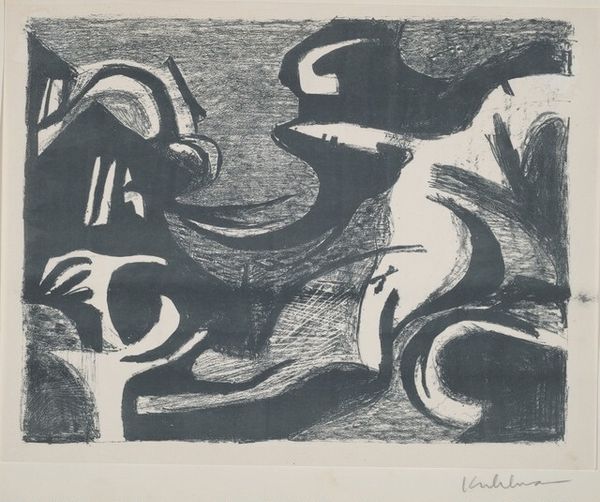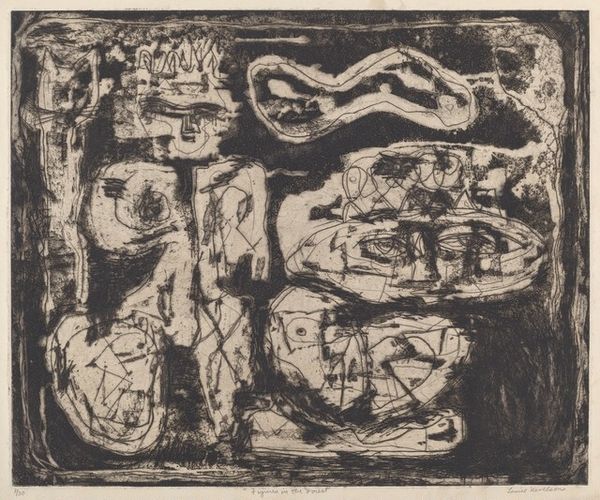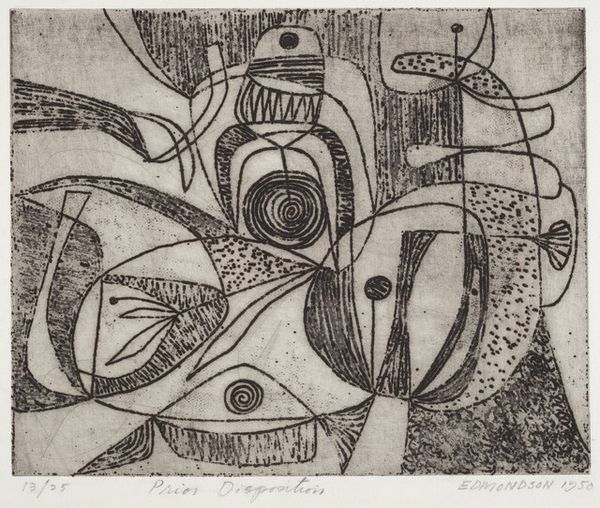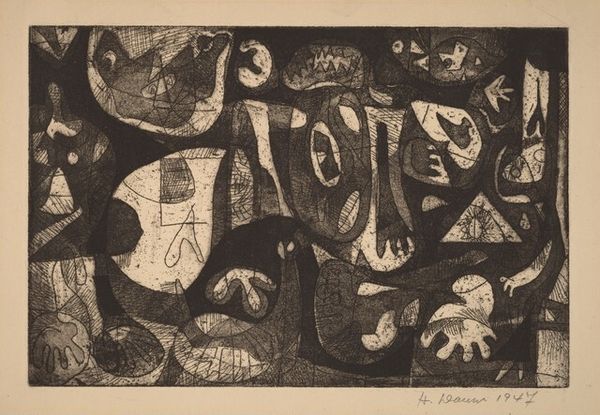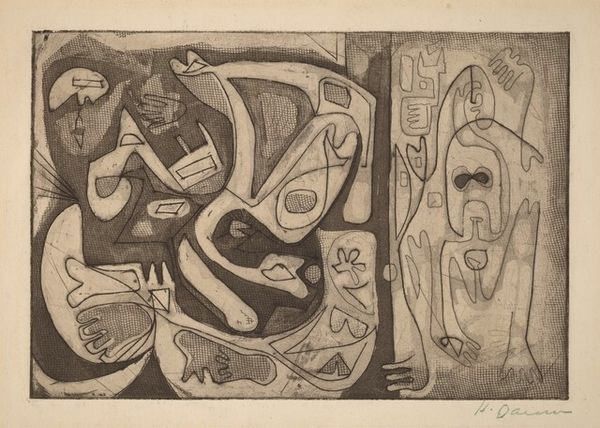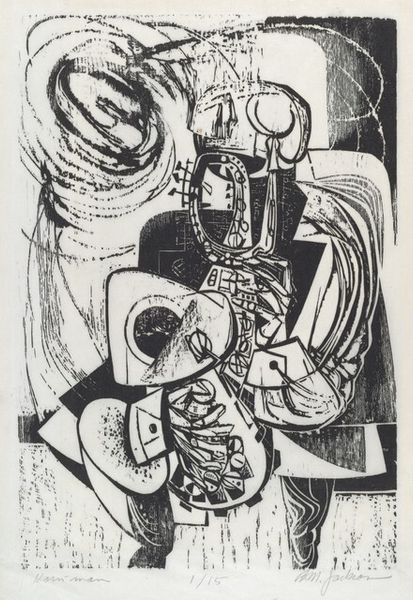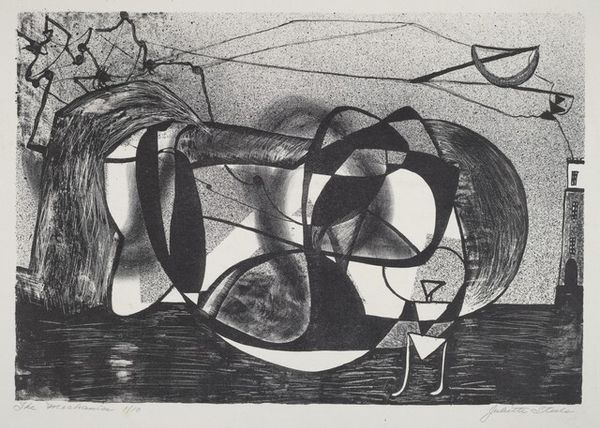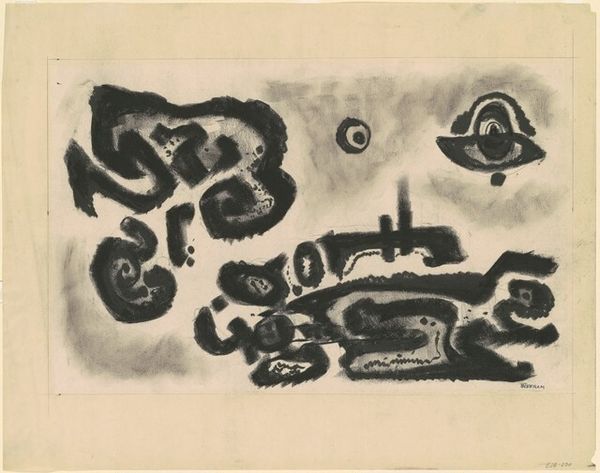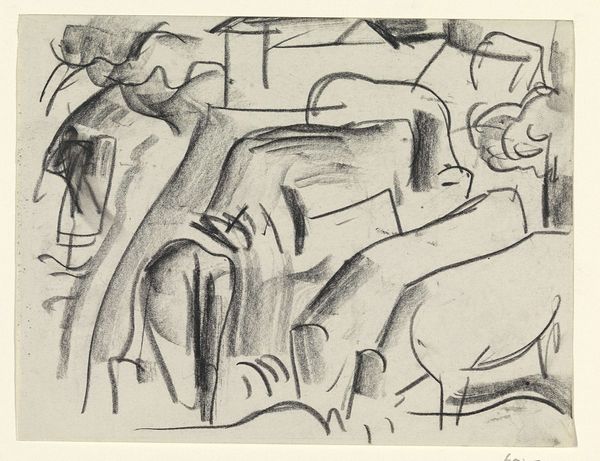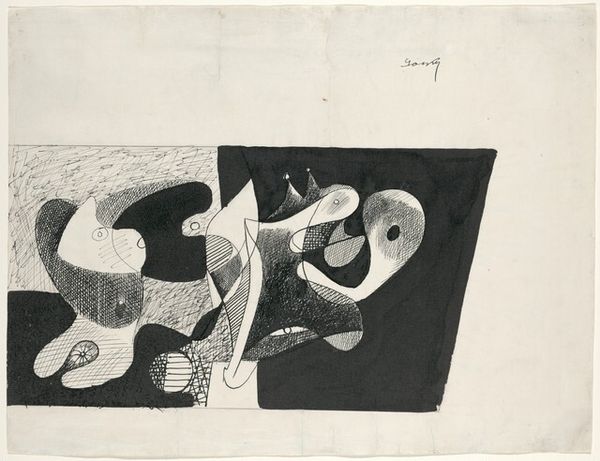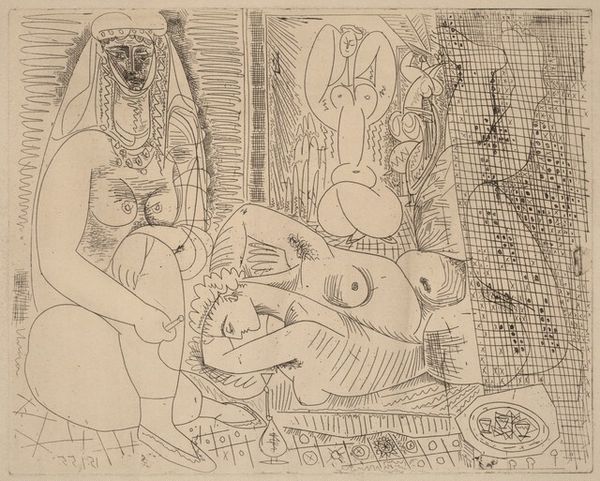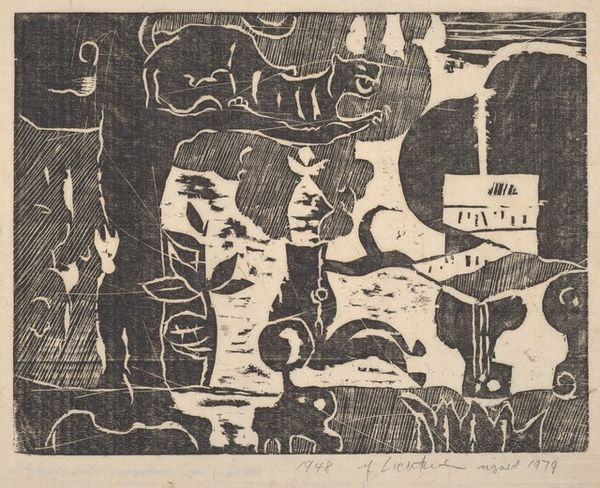
print, etching
#
abstract-expressionism
# print
#
etching
#
form
#
line
Dimensions: plate: 20.1 × 24.9 cm (7 15/16 × 9 13/16 in.) sheet: 37.1 × 40.6 cm (14 5/8 × 16 in.)
Copyright: National Gallery of Art: CC0 1.0
Will Barnet created ‘Woodland’ in 1946, using etching – a printmaking technique involving acid, metal plates, and considerable skill. The image is built from an intricate web of lines, made possible by the etching process. Barnet would have coated a metal plate with a waxy, acid-resistant substance, then drawn his design into it. Next, he immersed the plate in acid, which bit into the exposed lines. The plate is then inked and pressed onto paper, transferring the image. Look closely and you’ll notice the expressive potential of the etched line. Barnet uses it to suggest textures, depths, and forms, bringing the woodland scene to life. The graphic quality has an affinity with the imagery used in mass media of the time, such as newspapers and printed advertisements. The many hours of labor, and the artist’s deep understanding of materials and processes, are crucial to understanding ‘Woodland’ and the ways in which printmaking operates both as a fine art and a mode of mass production.
Comments
No comments
Be the first to comment and join the conversation on the ultimate creative platform.
